Artículos SCI
2014
2014
Materiales Nanoestructurados y Microestructura
Impregnation of carbon black for the examination of colloids using TEM
Gontard, LC; Knappett, BR; Wheatley, AEH; Chang, SLY; Fernandez, ACarbon, 76 (2014) 464-468
Show abstract ▽
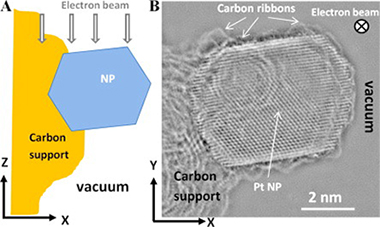
Nanoparticles are frequently synthesised as colloids, dispersed in solvents such as water, hexane or ethanol. For their characterisation by transmission electron microscopy (TEM), a drop of colloid is typically deposited on a carbon support and the solvent allowed to evaporate. However, this method of supporting the nanoparticles reduces the visibility of fine atomic details, particularly for carbonaceous species, due to interference from the 2-dimensional carbon support at most viewing angles. We propose here the impregnation of a 3 dimensional carbon black matrix that has been previously deposited on a carbon film as an alternative means of supporting colloidal nanoparticles, and show examples of the application of this method to advanced TEM techniques in the analysis of monometallic, core@shell and hybrid nanoparticles with carbon-based shells.
Nanoparticles represent one of the most studied structures in nanotechnology and nanoscience because of the wide range of applications arising from their unique optical, physical and chemical properties [1]. Often they have core@shell structures, or are coated with organic molecules. Nanoparticle functionality is largely affected by the specific configuration of the outer surface atoms. For example, in heterogeneous catalysis activity and selectivity are mostly determined by the type of atomic defects present at the surface of metallic nanoparticles, and in the field of biomedicine the surface coating of hybrid (inorganic core@organic shell) nanoparticles regulates their stability, solubility and targeting.
Nanoparticles are frequently synthesised using solution techniques that yield colloids, i.e., a solid–liquid mixture containing solid particles that are dispersed to various degrees in a liquid medium; most frequently water, ethanol or hexane. Colloid characterisation generally employs a variety of techniques to establish understanding and control over nanoparticle synthesis and properties. Electron microscopy in transmission mode (TEM) and in scanning transmission mode (STEM) are widely used for particle characterisation, and advances in these techniques mean that it is now routinely possible to resolve single atoms at the surfaces of nanoparticles using aberration-corrected microscopes, to elucidate the three-dimensional shapes of nanoparticles using electron tomography, and to enhance the contrast in very low density materials (e.g., carbonaceous materials) using electron holography [2] and [3]. However, the significant potential of these (S)TEM techniques is ultimately limited by the sample and the techniques available for sample preparation.
Typically, examination by (S)TEM requires that a nanoparticulate sample be prepared by depositing a drop of colloid on a thin, electron-transparent support. It is usual that an amorphous carbon film, silicon nitride film or graphene layers deposited on a copper grid constitute the support [4]. Crucially, these sample preparation techniques suffer from the major limitation that the contrast from the support often shadows atomic details at the particle surface. Moreover, it has been established that the thinnest supports can degrade under electron-beam irradiation, affecting particle stability [5], and also that hydrocarbon contamination can be an issue [6]. The most widely used commercially available TEM support is holey carbon, which comprises of a perforated carbon thin film. In this case, sample preparation aims to locate at least some of the nanoparticles of interest at the edges of the perforations. However, the concave nature of the holes means that solvent contaminants tend to accumulate preferentially at these sites. Moreover, if the TEM sample holder is tilted a particle attached to the edge of a hole is very likely to be shadowed by the carbon film. Taken together, these drawbacks significantly limit the application of techniques such as electron tomography [6].
We propose here a method of circumventing some of these fundamental problems by developing a technique for mounting nanoparticulate samples using a carbon matrix that is inspired by the way samples used in electrocatalysis are prepared [7]. Fig. 1 shows an image of a typical Pt-based electrocatalyst supported on carbon black as used in proton-electron membrane fuels cells, and which consists of Pt nanoparticles formed by calcination of a carbon black impregnated with a solution of salt precursor. Carbon black is a low-grade form of graphite, which is composed of nanocrystallites and no long-range order [8]. In Fig. 1 the carbon black is Vulcan XC-72R, which is widely used as a catalyst support in fuel cells because it provides high electrical conductivity, good reactant gas access, adequate water handling and good corrosion resistance, whilst allowing high dispersion of the particles. In electrocatalyst samples it is common to find particles, like the 5 nm Pt particle shown in Fig. 1, attached strongly to the surface of the support and viewed edge-on against a vacuum so as to provide optimal conditions for high-resolution TEM (HRTEM). Fig. 1B is a quantitative phase image of a Pt particle obtained from a defocus series of 20 images at intervals of 5 nm acquired in a FEGTEM JEOL 2020 at 200 kV with spherical aberration of −30 μm and applying the exit-wave restoration technique [2]. The contrast between details of the particle finestructure is very high compared to conventional HRTEM images, and details such as the presence of monoatomic carbon ribbons surrounding the particle can be seen.
Septiembre, 2014 | DOI: 10.1016/j.carbon.2014.05.006
Materiales para Bioingeniería y Regeneración Tisular
Reticulated bioactive scaffolds with improved textural properties for bone tissue engineering: Nanostructured surfaces and porosity
Ramiro-Gutierrez, ML; Will, J; Boccaccini, AR; Diaz-Cuenca, AJournal of Biomedical Materials Research Part A, 102 (2014) 2982-2992
Show abstract ▽
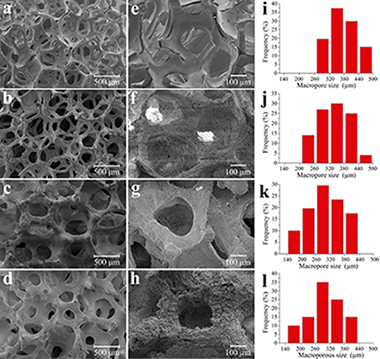
Organised nanoporous SBA-15 type silica precursor (SP) particulate material has been processed into three-dimensional macroporous, reticulated structures using a novel strategy consisting of blending increasing percentages of SP with a SiO2-CaO-P2O5 (80Si15Ca5P) mesoporous bioactive glass (MBG) sol. The procedure successfully produced consolidated and functionally competent open-cell scaffolds while preserving the nanoporous order of the SP. Scaffolds were prepared using four different (MBG)/(SP) ratios. These structures were then characterized using field emission gun scanning electron microscopy, X-ray diffraction (XRD), nitrogen adsorption-desorption measurements, and compressive strength testing. Open-cell interconnected structures with dual macro (150-500 mu m) and nano (4-6 nm)-organised porosity were produced. Both the textural and mechanical properties were found to improve with increasing SBA-15 content. The in vitro bioactive response using simulated body fluid confirmed high reactivity for all prepared scaffolds. In addition, the SBA-15 containing scaffolds exhibited a superior ability to delay the pH-triggered lysozyme release with antibiotic activity. (C) 2013 Wiley Periodicals, Inc.
Septiembre, 2014 | DOI: 10.1002/jbm.a.34968
Nanotecnología en Superficies y Plasma - Materiales Nanoestructurados y Microestructura
On the formation of the porous structure in nanostructured a-Si coatings deposited by dc magnetron sputtering at oblique angles
Godinho, V; Moskovkin, P; Alvarez, R; Caballero-Hernandez, J; Schierholz, R; Bera, B; Demarche, J; Palmero, A; Fernandez, A; Lucas, SNanotechnology, 25 (2014) 355705
Show abstract ▽
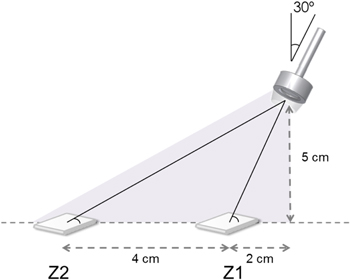
The formation of the porous structure in dc magnetron sputtered amorphous silicon thin films at low temperatures is studied when using helium and/or argon as the processing gas. In each case, a-Si thin films were simultaneously grown at two different locations in the reactor which led to the assembly of different porous structures. The set of four fabricated samples has been analyzed at the microstructural level to elucidate the characteristics of the porous structure under the different deposition conditions. With the help of a growth model, we conclude that the chemical nature of the sputter gas not only affects the sputtering mechanism of Si atoms from the target and their subsequent transport in the gaseous/plasma phase towards the film, but also the pore formation mechanism and dynamics. When Ar is used, pores emerge as a direct result of the shadowing processes of Si atoms, in agreement with Thornton's structure zone model. The introduction of He produces, in addition to the shadowing effects, a new process where a degree of mobility results in the coarsening of small pores. Our results also highlight the influence of the composition of sputtering gas and tilt angles (for oblique angle deposition) on the formation of open and/or occluded porosity.
Septiembre, 2014 | DOI: 10.1088/0957-4484/25/35/355705
Materiales Coloidales
New Single-Phase, White-Light-Emitting Phosphors Based on delta-Gd2Si2O7 for Solid-State Lighting
Fernandez-Carrion, AJ; Ocana, M; Garcia-Sevillano, J; Cantelar, E; Becerro, AIJournal of Physical Chemistry C, 118 (2014) 18035-18043
Show abstract ▽
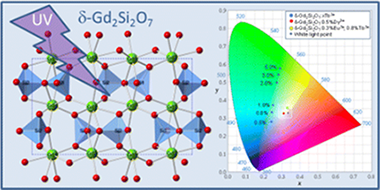
Two new white-light (WL)-emitting phosphors (δ-Gd2Si2O7:Dy and δ-Gd2Si2O7:Eu,Tb) have been synthesized by the sol–gel method. The Gd-Ln3+ (Ln3+= Dy3+, Tb3+, Eu3+) energy-transfer band has been used to excite both phosphors, which provides an enhancement of the Ln3+ emissions. First, WL was generated from δ-Gd2Si2O7:xDy thanks to the particular ratio of the blue and yellow emissions observed in all three compositions, which had chromatic coordinates of x = 0.30, y = 0.33 and CCT values of between 7077 and 6721 K. The decay curves of the main transitions of Dy3+ showed a maximum lifetime value for δ-Gd2Si2O7:0.5%Dy, which is, therefore, the most efficient doping level. Second, a broad spectral range, single-phase, WL-emitting phosphor was generated by codoping δ-Gd2Si2O7 with Tb3+ and Eu3+. The composition δ-Gd2Si2O7:0.3%Eu3+;0.8%Tb3+ showed CIE coordinates well inside the ideal WL region of the CIE diagram and a CCT value of 5828 K. The single-phase WL-emitting phosphors presented in this paper are promising materials to be used in white solid-state lighting systems and field-emission displays due to the advantages provided both by Gd3+ ions and by the high thermal and chemical stabilities of the rare earth disilicate matrix.
Agosto, 2014 | DOI: 10.1021/jp505524g
Nanotecnología en Superficies y Plasma
Bending Induced Self-Organized Switchable Gratings on Polymeric Substrates
Parra-Barranco, J; Oliva-Ramirez, M; Gonzalez-Garcia, L; Alcaire, M; Macias-Montero, M; Borras, A; Frutos, F; Gonzalez-Elipe, AR; Barranco, AACS Applied Materials & Interfaces, 6 (2014) 11924-11931
Show abstract ▽
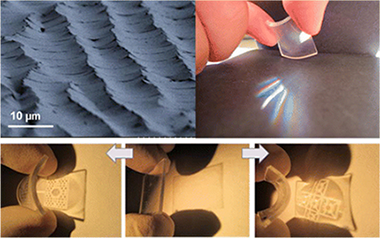
We present a straightforward procedure of self-surface patterning with potential applications as large area gratings, invisible labeling, optomechanical transducers, or smart windows. The methodology is based in the formation of parallel micrometric crack patterns when polydimethylsiloxane foils coated with tilted nanocolumnar SiO2 thin films are manually bent. The SiO2 thin films are grown by glancing angle deposition at room temperature. The results indicate that crack spacing is controlled by the film nanostructure independently of the film thickness and bending curvature. They also show that the in-plane microstructural anisotropy of the SiO2 films due to column association perpendicular to the growth direction determines the anisotropic formation of parallel cracks along two main axes. These self-organized patterned foils are completely transparent and work as customized reversible diffraction gratings under mechanical activation.
Agosto, 2014 | DOI: 10.1021/am5037687
- ‹ anterior
- 268 of 420
- siguiente ›














